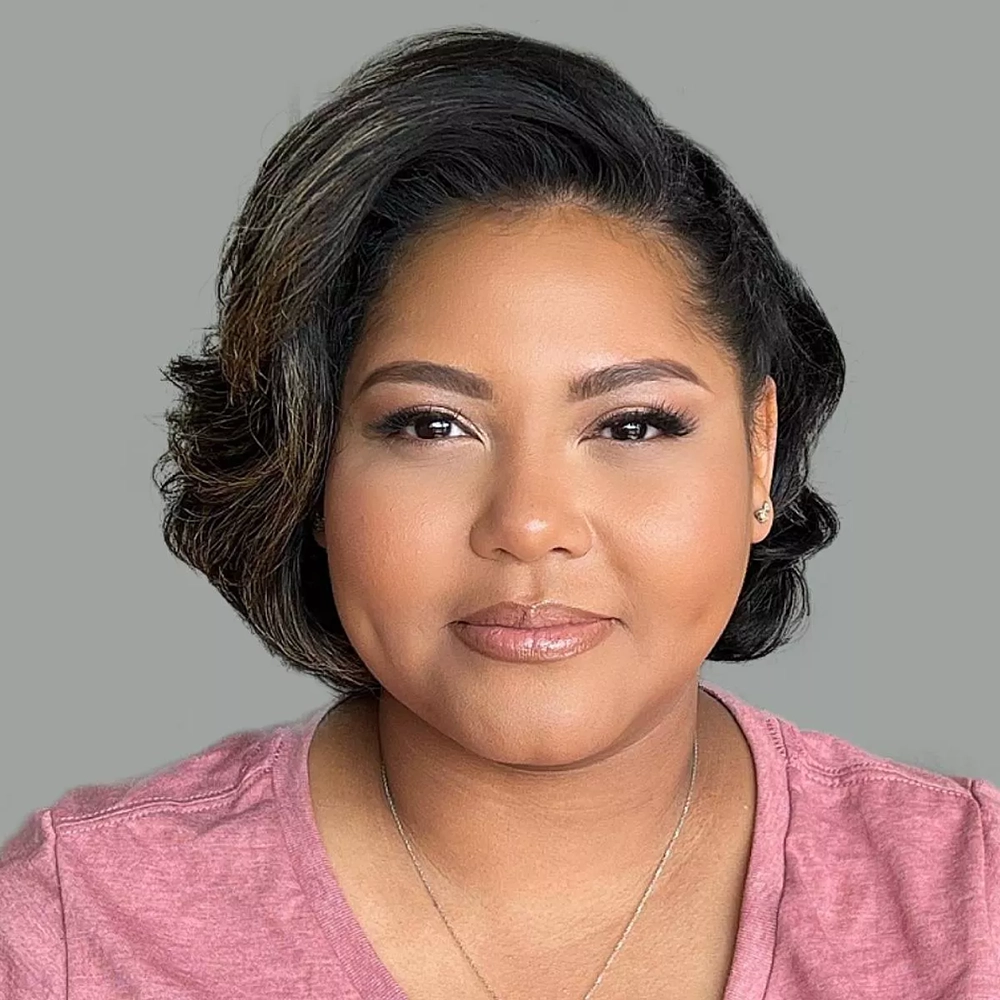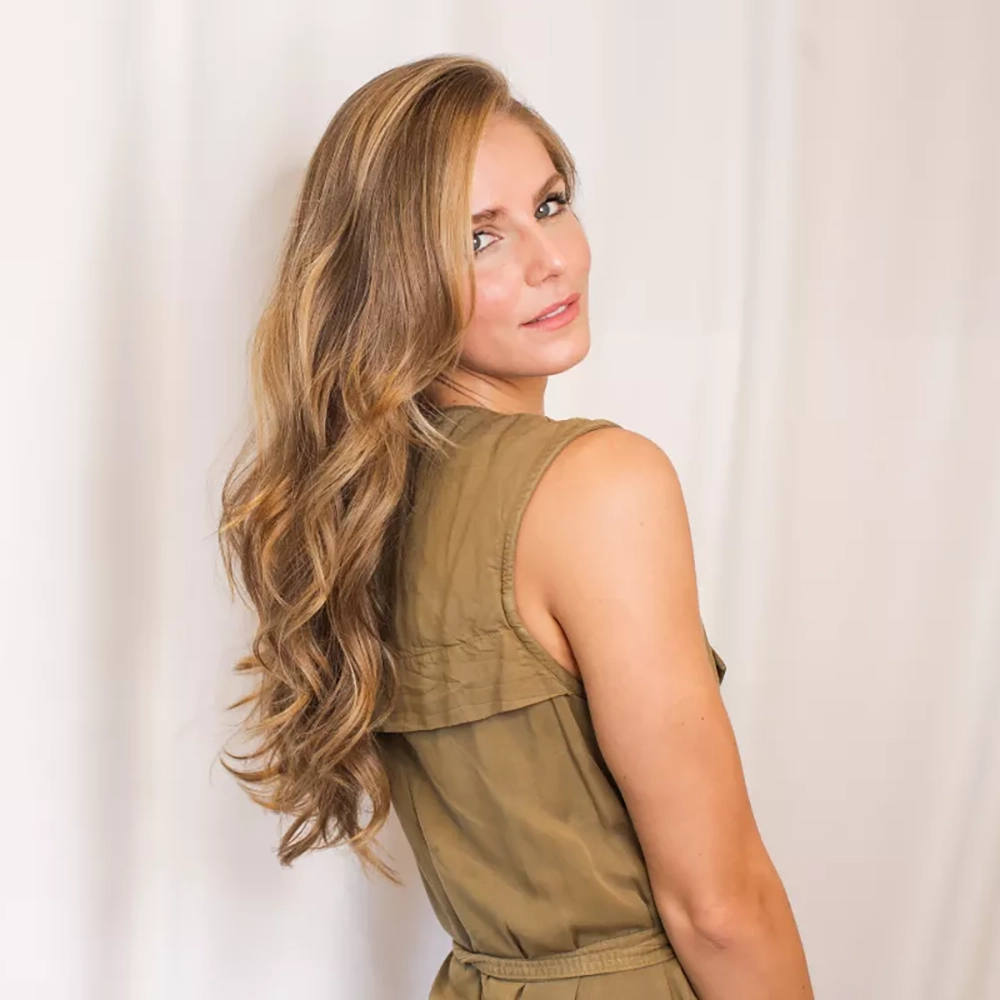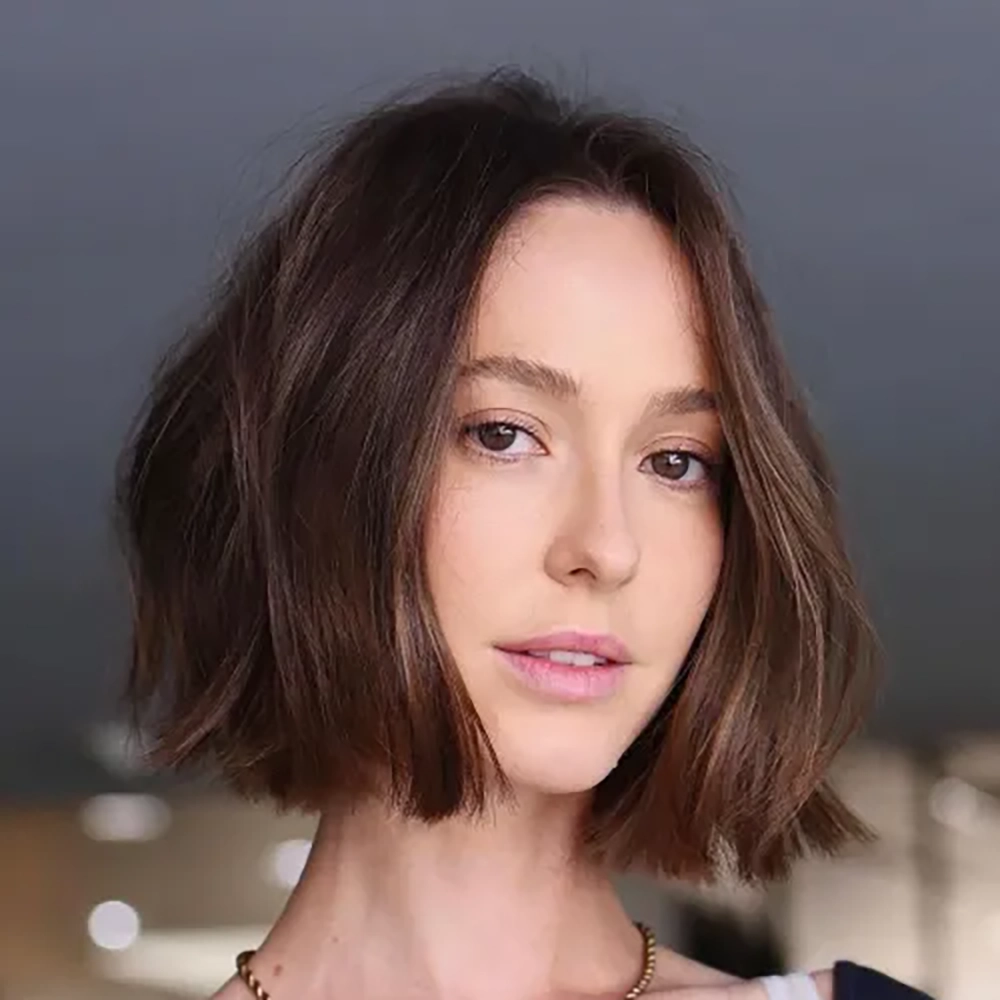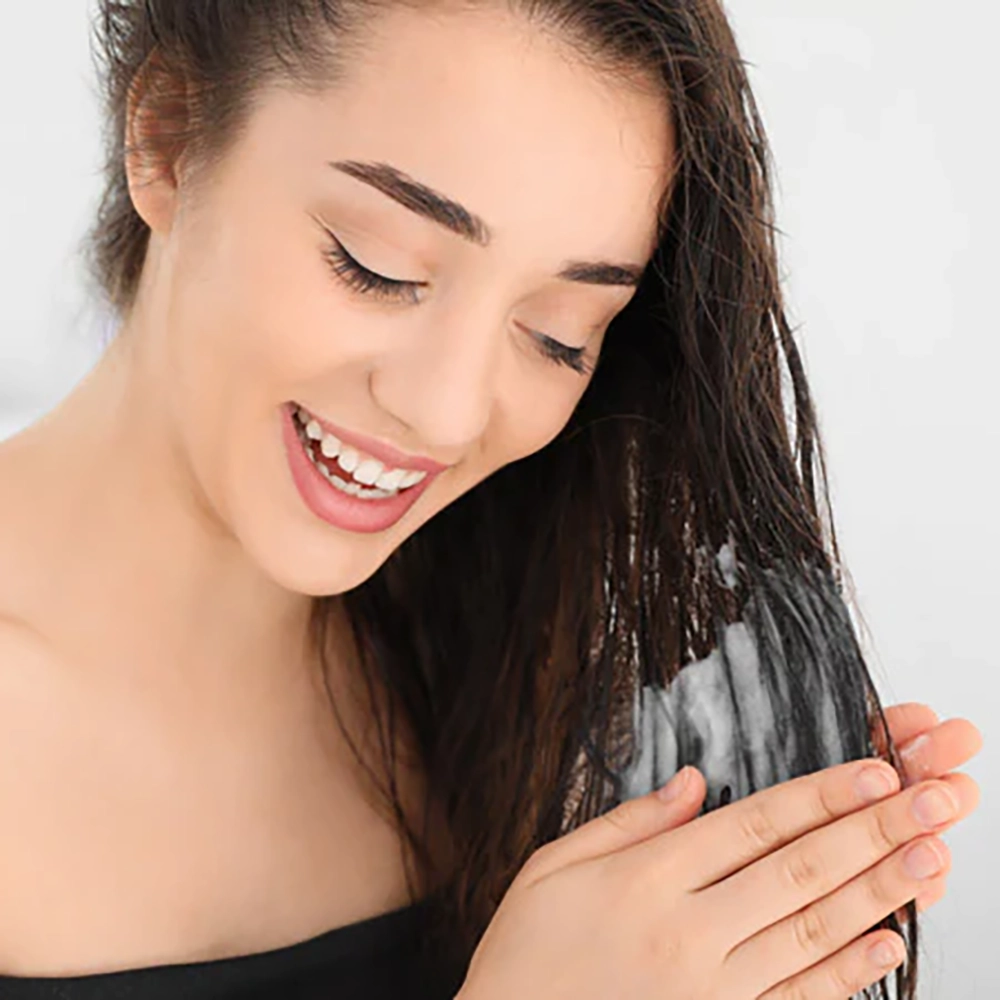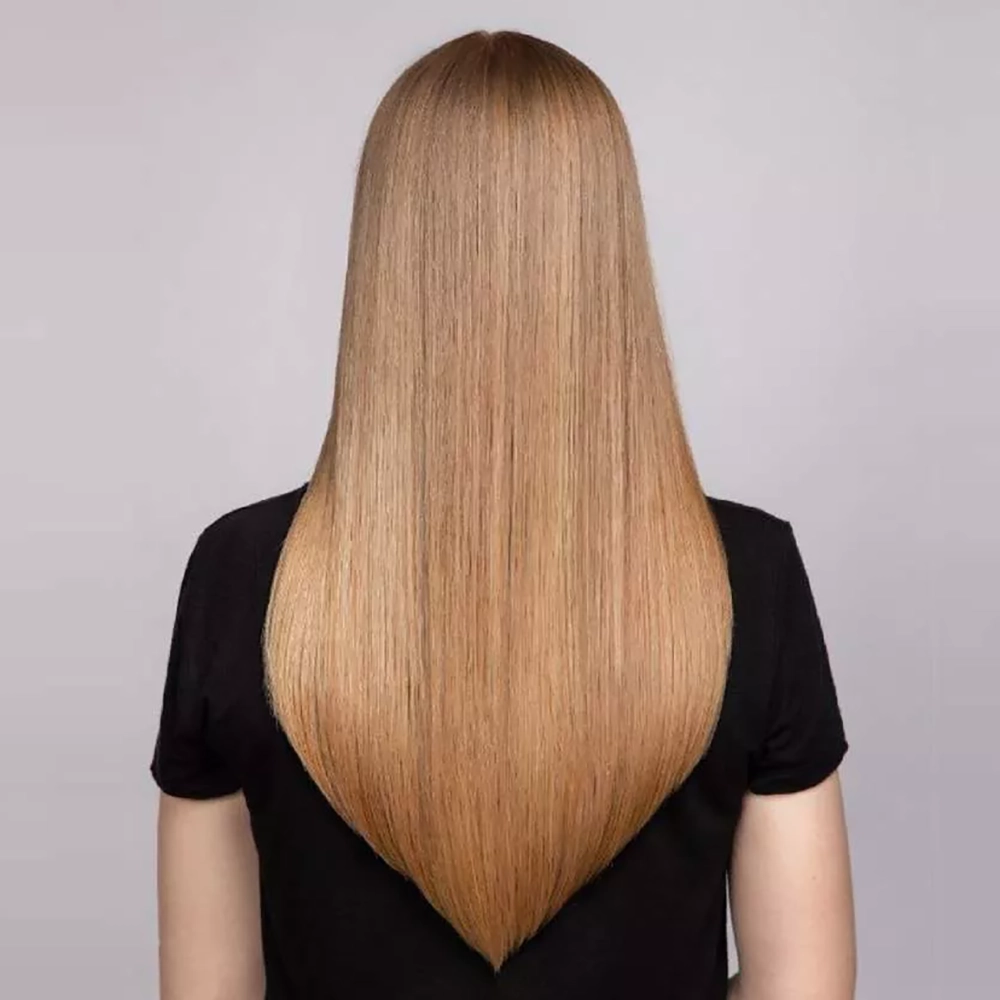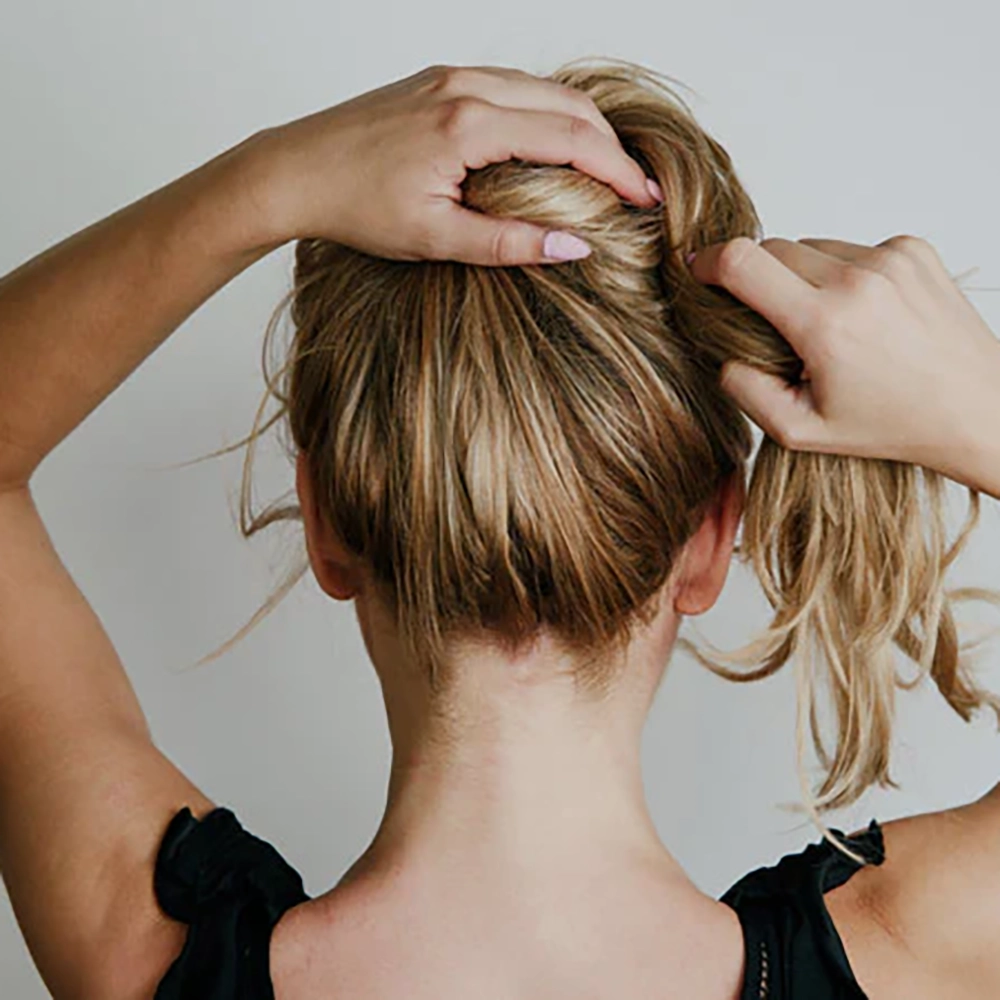The Science Behind Hair Thickness
When it comes to hair, many factors contribute to its overall appearance and thickness. The science behind hair thickness is complex and fascinating, involving a combination of genetics, hair follicles, and hair growth cycles.
Genetics play a significant role in determining the thickness of your hair. Your genes determine the size and shape of your hair follicles, which ultimately affects the thickness of each individual strand. People with larger follicles tend to have thicker hair, while those with smaller follicles have finer hair.
Hair follicles are tiny organs in the skin that produce and grow hair. Each follicle has its own growth cycle, consisting of a growth phase (anagen), a transitional phase (catagen), and a resting phase (telogen). The duration of each phase varies from person to person, which is why some people’s hair grows faster or thicker than others.
Hair growth cycles are influenced by various factors, including age, hormones, and health. During the anagen phase, hair grows actively, while in the telogen phase, hair rests and eventually falls out. The length of the anagen phase determines how long your hair can grow, and the more hair that grows, the thicker your overall hair appears.
The Role of Hair Length in Perception
Hair is an important aspect of a person’s appearance and can greatly influence how they are perceived by others. One factor that plays a significant role in this perception is the length of one’s hair. The length of a person’s hair can convey various messages and impressions, depending on cultural norms, personal preferences, and societal standards. It can affect how others perceive a person’s age, attractiveness, personality, and even their level of professionalism.
Firstly, let’s talk about the perceptions associated with long hair. In many cultures, long hair is often associated with femininity. Women with long hair are often seen as more attractive, youthful, and nurturing. Long hair can also convey a sense of elegance and sophistication. On the other hand, long hair in men can be seen as a rebellious or non-conforming trait, challenging traditional masculinity norms.
Conversely, short hair is often associated with practicality and confidence. Short haircuts are often favored in professional settings, as they are perceived as more mature and competent. Short hair can also give off an edgy and bold vibe, signaling independence and a willingness to break societal norms. Additionally, short hair is often chosen by individuals who prioritize convenience and ease of styling.
It is important to note that these perceptions are subjective and can vary across different cultures and societies. Some individuals may prefer long hair over short hair or vice versa, and these preferences can be influenced by personal taste or societal influences. Moreover, the perception of hair length can also change over time, as fashion trends evolve and societal norms shift.
- In conclusion, the length of one’s hair plays a significant role in how they are perceived by others. Whether it’s long or short, hair length can convey various messages and impressions. It is essential to remember that these perceptions are subjective and can vary across different cultures and societies. Ultimately, it is up to each person to decide how they want to express themselves through their hair length and to embrace their personal style and preferences.
How Hair Length Affects Hair Density
When it comes to hair, many factors contribute to its overall appearance and thickness. One of these factors is hair length, which plays a significant role in determining hair density. Hair density refers to the number of hair strands per square centimeter of the scalp. It is important to understand how hair length affects hair density to make informed decisions about styling and care.
Firstly, it is essential to note that hair strands grow from hair follicles on the scalp. Each follicle produces a single hair strand, and the density of follicles varies among individuals. However, regardless of the follicle density, the length of the hair can create an illusion of density.
Shorter hair tends to look denser and thicker than longer hair due to the way it lays on the scalp. When hair is shorter, the individual strands are closer together, creating a perception of fuller hair. On the other hand, longer hair tends to separate and spread out, making the density appear lower than it actually is. While this does not mean that longer hair is less dense, it may give the impression of thinner hair.
The Optical Illusion of Shorter Hair
When it comes to hairstyling, the length of your hair can have a significant impact on how it is perceived. One of the most interesting phenomena in this regard is the optical illusion of shorter hair. While shorter hair may seem thinner and less voluminous, it can actually create the illusion of thicker and fuller hair.
The reason behind this illusion lies in the way our eyes perceive the length of our hair. When hair is cut shorter, the ends appear thicker and more substantial. This is because the hair shaft is cut at a blunt angle, creating a fuller appearance. Additionally, shorter hair tends to stand up more, which adds height and volume to the overall look.
Another factor that contributes to the illusion of shorter hair is the contrast between the length of the hair and the scalp. When hair is cut shorter, the scalp becomes more visible, giving the impression of denser hair. This is especially true for individuals with fine or thin hair, as the contrast between the hair and the scalp is more pronounced.
To enhance the illusion of shorter hair, there are a few styling techniques that can be employed. One popular method is adding layers to the hair. Layers create movement and texture, making the hair appear fuller. Additionally, using texturizing products, such as volumizing sprays or dry shampoos, can add grip and volume to the hair, further enhancing the illusion.
In conclusion, the optical illusion of shorter hair can make your locks appear thicker and more voluminous. By cutting your hair shorter, you create a blunt edge that gives the illusion of thickness. Additionally, the contrast between the length of the hair and the scalp adds to the perception of density. With the right styling techniques and products, you can enhance this illusion and achieve the appearance of fuller, thicker hair.
The Impact of Haircut Techniques
When it comes to hair, there are countless factors that can influence its appearance and overall health. One often overlooked aspect is the impact of haircut techniques. The way your hair is cut can drastically alter its thickness, volume, and overall shape. In this blog post, we will delve into the various haircut techniques and explore how they can affect the look and feel of your hair.
1. Layers: Layers are one of the most popular haircut techniques and can have a significant impact on the overall appearance of your hair. By incorporating layers into your haircut, you can add texture and movement. This technique works by removing weight from certain areas while leaving others longer. The result is often a hairstyle that looks voluminous and full of life.
2. Blunt Cut: In contrast to layers, a blunt cut involves cutting all the hair to the same length. This technique can make the hair appear thicker and more structured. A blunt cut is often sought after by individuals with fine or thin hair, as it can create the illusion of density. However, it’s important to note that a blunt cut may not be ideal for those with very thick or curly hair, as it can result in a triangular shape.
3. Texturizing: Texturizing is a technique used to enhance the natural texture of the hair. It involves cutting into the hair at various angles to create different lengths and dimensions. This technique is particularly beneficial for those with curly or wavy hair, as it adds definition and reduces bulk. Texturizing can also be used to create a more lived-in, effortless look.
4. Graduated Cut: A graduated cut, also known as a layered or stacked cut, is characterized by shorter layers at the back of the head that gradually blend into longer layers towards the front. This technique is often used to add volume and movement to the hair. A graduated cut can be particularly flattering for individuals with thin or flat hair, as it creates the illusion of thickness and dimension.
| Haircut Technique | Effect |
|---|---|
| Layers | Texture and movement |
| Blunt Cut | Thicker appearance |
| Texturizing | Enhanced natural texture |
| Graduated Cut | Volume and movement |
These are just a few of the haircut techniques that can have a profound impact on the look and feel of your hair. It’s important to communicate with your hairstylist and discuss your desired outcome before undergoing any haircut. By understanding the different techniques and their effects, you can make an informed decision and achieve a hairstyle that suits your preferences and enhances your natural beauty.
The Benefits of Short Hairstyles for Thinning Hair
When it comes to thinning hair, finding the right hairstyle can make all the difference. Short hairstyles have long been touted as a solution for thinning hair, and for good reason. Not only do they create the illusion of thicker hair, but they also offer a range of benefits that can help boost your confidence and overall appearance.
One of the key benefits of short hairstyles for thinning hair is that they add volume and fullness to the hair. By cutting the hair shorter, the weight is reduced, making it easier for the hair to hold its shape and appear thicker. Additionally, shorter haircuts often involve layers, which can further enhance volume and create the illusion of density.
Another advantage of short hairstyles for thinning hair is the ease of styling. Shorter hair requires less time and effort to wash, dry, and style compared to longer hair. This can be especially beneficial for individuals with thinning hair, as excessive styling and heat can cause further damage and breakage. With a shorter hairstyle, you can achieve a polished and put-together look without spending hours in front of the mirror.
Furthermore, short hairstyles can help to minimize the appearance of thinning hair. By keeping the hair shorter, attention is drawn away from any areas of thinning or sparse hair. This can be particularly useful for individuals who are self-conscious about their thinning hair and want to divert attention to other features of their face or overall style.
In addition to the visual benefits, short hairstyles for thinning hair can also promote healthier hair growth. With shorter hair, it is easier to maintain a regular hair care routine, including regular trims and nourishing treatments. This can help to prevent further damage and breakage, allowing for stronger and thicker hair to grow in.
In conclusion, short hairstyles offer a range of benefits for individuals with thinning hair. They add volume, are easy to style, minimize the appearance of thinning hair, and promote healthier hair growth. If you are experiencing thinning hair and are looking for a solution, a short hairstyle may be worth considering. Not only will it help improve the overall look and feel of your hair, but it can also boost your confidence and allow you to embrace your unique style.
Tips for Creating the Illusion of Thicker Hair
Having thick and voluminous hair is often seen as a sign of youth and vitality. However, not everyone is naturally blessed with luscious locks. If you have thin or fine hair, don’t fret! There are several tips and tricks you can use to create the illusion of thicker hair. Whether it’s through styling techniques or using the right products, here are some handy tips to help you achieve the appearance of fuller and more voluminous hair.
1. Choose the Right Haircut
The first step in creating the illusion of thicker hair is choosing the right haircut. Opting for a shorter hairstyle can instantly make your hair appear denser. Shorter haircuts tend to have more volume at the roots, giving the illusion of thickness. Additionally, incorporating layers into your haircut can also add body and movement to your hair, making it look fuller.
2. Volume-Boosting Products
To enhance the appearance of thicker hair, it’s important to invest in the right hair products. Look for volumizing shampoos and conditioners that are specifically formulated to add body and fullness to your hair. Additionally, using a volumizing mousse or spray can help lift your roots and create height, giving the illusion of thicker strands. Applying these products directly to the roots and blow-drying your hair upside down can maximize their effectiveness.
3. Play with Hairstyling Techniques
There are several hairstyling techniques you can implement to create the illusion of thicker hair. One popular method is backcombing or teasing the roots of your hair to add volume. This technique involves gently combing the hair in the opposite direction of its natural fall, creating lift and fullness at the roots. Another method is using hot rollers or a curling iron to add waves or curls to your hair, which can make it appear thicker and fuller.
4. Color Effects
Believe it or not, the color of your hair can also impact its perceived thickness. Applying highlights or lowlights to your hair can create dimension and make it appear fuller. Opt for a technique called “color melting,” where the highlights are seamlessly blended into your natural hair color, giving it a multi-dimensional effect. This creates the illusion of depth and density, making your hair look thicker.
5. Proper Hair Care
Lastly, taking proper care of your hair is essential for maintaining its health and appearance. Avoid excessive heat styling, as it can damage your hair and make it look thinner. Instead, opt for heat-free styling methods like air-drying or using Velcro rollers. Regular trims are also crucial to prevent split ends, which can make your hair appear flat and lackluster. Additionally, using a wide-toothed comb or brush to detangle your hair can prevent breakage and maintain its thickness.
| Tips for Creating the Illusion of Thicker Hair: |
|---|
| 1. Choose the Right Haircut |
| 2. Volume-Boosting Products |
| 3. Play with Hairstyling Techniques |
| 4. Color Effects |
| 5. Proper Hair Care |
By following these tips and incorporating them into your hair care routine, you can create the illusion of thicker hair and boost your confidence. Remember, embracing and working with your natural hair is key. So, go ahead and experiment with different techniques until you find the ones that work best for you. With a little effort and know-how, you can rock fuller-looking hair in no time!


